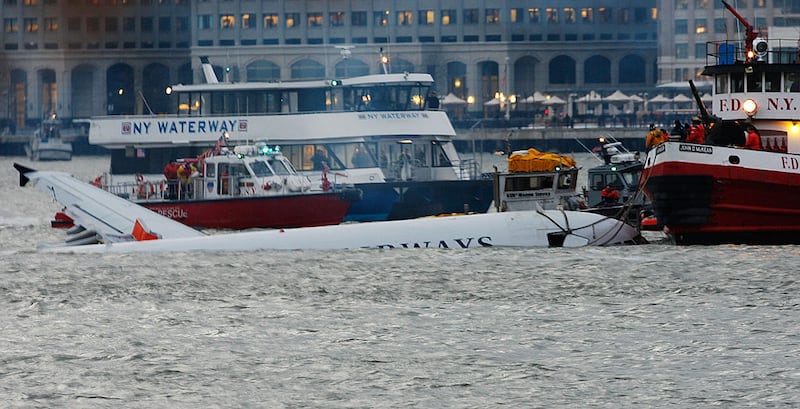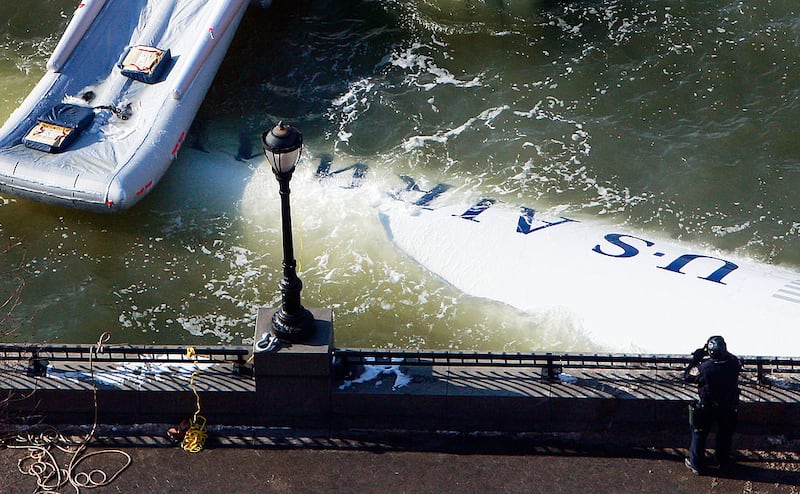The ‘Miracle on the Hudson’ is still remembered as the greatest survival achievement in the history of air accidents in the United States and the world. 15 years after the event, it is still astonishing to recall how the 155 passengers on board and crew members survived what could have been one of the worst tragedies.
Their pilot, Chesley ‘Sully’ Sullenberger, continues to be seen as a hero for achieving one of the greatest feats in command of an aircraft. Surviving an event of this kind marks anyone’s life, so currently, the survivors testify to the before and after of the event, which miraculously did not go beyond being the scare of their lives.
PUBLICIDAD
How was the accident of the US Airways Flight 1549?
On January 15, 2009, US Airways Flight 1549 took off from LaGuardia Airport in New York under the command of pilot 'Sully' Sullenberger and copilot Jeff Skiles. While in the air, a flock of Canadian geese collided with the two engines, causing them to lose power immediately.
Sullenberger knew he couldn't return to the airport, and that he also wouldn't have time to reach the closest ones, which were Teterboro and Newark in New Jersey. He had to act quickly. He contacted air traffic control, informing them that he would land on the Hudson River in New York.
The alert was given to the passengers. The flight attendants were yelling, instructing everyone to place their heads between their legs and look down. The idea of dying crossed everyone's mind.
Sullenberger managed to land on the Hudson River, and miraculously, the plane remained in one piece. However, the danger did not end there. Passengers reported that water started to seep in, so they were instructed to quickly exit and position themselves on the wings.
Incredibly, all 155 passengers on board survived, so the case went down in history as the 'Miracle on the Hudson'.
'The Miracle on the Hudson' and its effect on the survivors

15 years after the 'Miracle on the Hudson', many survivors agree that their lives have not been the same since that January 15th. The trauma of thinking they were going to die, that they wouldn't finish raising their children, that they wouldn't be able to share moments with their loved ones, or that they would leave unfinished goals, changed their lives, either for better or for worse.
CNN reported that many survivors had psychological effects and made significant changes in their lives following the near-death experience. For example, passenger Pam Seagle, a senior marketing executive who was in seat 12A, was inspired to reassess her life and make major changes. She began dedicating more time to her children and husband, and also focused on economic empowerment and women's rights.
Passenger Clay Presley became extremely claustrophobic. He can't be in enclosed spaces unless he knows there is a very easy way out. He was also afraid of boarding planes until he decided to face it and now, he is a pilot, owner of his own aircraft.
Collins Vallie, another passenger, experienced depression. "I became very sad, very blue. Suddenly, I didn't feel equipped to keep everything going," she said.
The aforementioned outlet presented the analysis of psychologist Richard Tedeschi, who explained that after a trauma, growth is common, although it is not the same for everyone.
“They often tell us that the events they have gone through have changed the course of their lives... Maybe it introduced them to things they had never considered for themselves before,” Tedeschi stated.
What happened to pilot Chesley 'Sully' Sullenberger from the 'Miracle on the Hudson'?
After the 'Miracle on the Hudson', letters kept arriving at pilot Chesley 'Sully' Sullenberger's house. CNN reported that his wife Lorrie Sullenberger mentioned that letters were coming from all over the world, and they received so many that postal workers had to carry them in containers.

He reported that they received an unsigned fax that said: "America needed a victory. Thank you." By that time, due to the economic recession and the overall context of the country, they felt relief with the survival story. It was like a beacon of hope and a positive story for everyone.
Sullenberger himself told CBS New York that "I believe that at a time when we needed it, during the financial collapse of '08-'09 when it seemed that human nature was mainly about selfishness and greed, this group of strangers rose to the occasion and made it their life's mission to ensure that every life was saved, and that is the potential that each of us has".
The aforementioned media outlet indicated that co-pilot Jeff Skiles is now a captain. “What has resonated even more over the passing years is realizing all the public safety nets we have out there that helped us so much, you know, from our air traffic controllers to the fire boats, the first responders at the ferry docks, the medical community in New York City. This couldn’t have happened without everyone working together towards a common goal, and that still surprises me today,” said Skiles.
